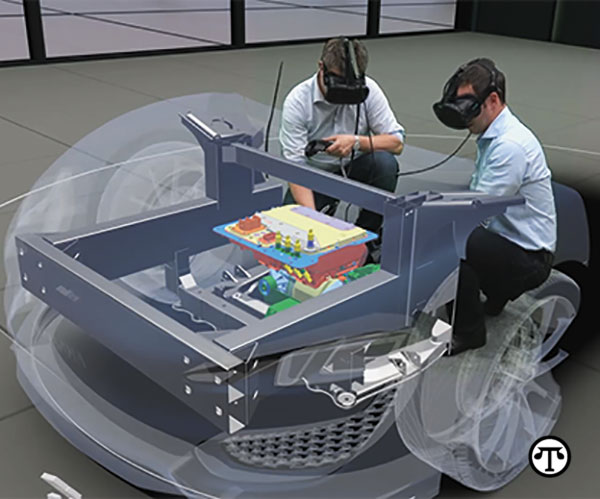Smart Factories With A Human Feel

(NAPSI)—Future smart factories may look like something out of a science-fiction movie but they’ll also contain a familiar element: people.
The idea is to improve flexibility and efficiency between humans and machines as they work in harmony. Instead of being isolated in steel cages, collaborative robots or “cobots” will work side-by-side with humans.
“Humans aren’t going away,” says Ian Simmons, Magna Vice President of Business Development and R&D. “There is enough of a shortage of manufacturing labor that you can augment assembly and manual tasks with robotics and use people where they are best used—assembling things that require dexterity and intelligence. Robots will do the dirty and dull tasks.”
These advanced manufacturing plants may also feature:
• Advanced robotic systems performing complex assembly tasks.
• Automated intelligent vehicles that completely handle material flow through the plant.
• Predictive analytics used to schedule repairs and maintenance before machines break down.
• Artificial intelligence providing real-time data, so managers can immediately react to a concern or quality issue.
• Drones flying above assembly lines, checking inventory and mapping heat loss with infrared cameras.
“Certain aspects are coming soon,” Simmons says. “Are we seeing a whole variety of applications for smart-factory technology to increase productivity and profitability? Absolutely.”
Advanced Robotics Preview Industry 4.0
Conventional industrial robots can’t perform complex tasks on the assembly line. But Magna’s advanced robotic system is taking robots to the next level. Corporate R&D developed the Core Advanced Robotics Technology for high-volume auto production. The first industrial application was launched at Magna’s Vehtek Systems in Ohio, where the advanced robotic system features human-like robotic operations. Camera systems let these robots identify components, pick them up and understand where they must be placed.
“We could not see any platform or technology like this coming from our traditional suppliers and production equipment and line integrators,” says Alex Zak, the Director of R&D who is leading the Advanced Robotics and manufacturing initiative. “It’s a platform technology that is used in academia and one-off complex robotics systems, such as the NASA space program.”
Wearable Tech Can Improve Manufacturing
Smart watches, tablets and virtual reality (VR) headsets are previewing the future of smart factories at a Magna Mechatronics division.
Dortec Industries is conducting a pilot project providing approximately 200 employees with wearable technology.
Wearable tech can:
• Reduce Downtime: Instant messaging replaces inefficient paperwork, intercoms and walkie-talkies.
• Improve Training: Virtual reality headsets let operators practice hand motions in the classroom.
• Improve Communication: Wearable tech is on the person at all times.
• Improve Quality: Bottlenecks and issues are easier to track. Data and analytics ensure that every assembly line has the support it needs.
• Boost Efficiency and Productivity: Response time increases and downtime decreases.
“The workforce loves it—even the people who have never owned a smartphone,” says Andrew Lukachko, a Maintenance Supervisor at the plant. “In the past, it was all paperwork and hard to manage. Now, we have a new tool to record completed work and receive requests. It gives us a direct line to each other.”

“Future, smart factories, science-fiction, people, workers, robots, cars, research, manufacturing plants, wearables, technology, VR http://bit.ly/33SANh2”
